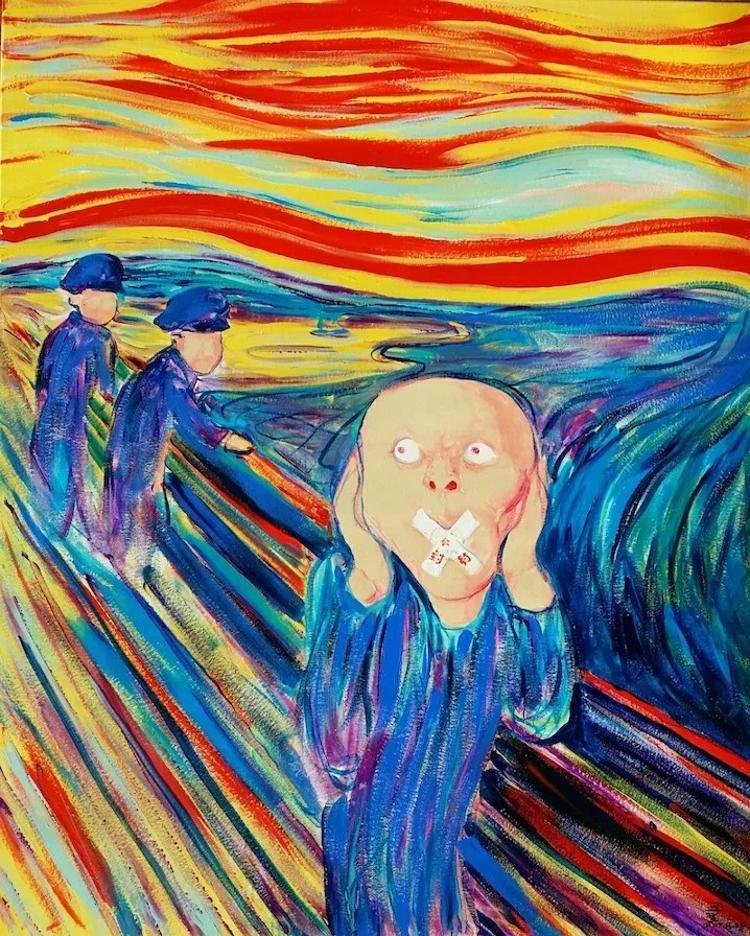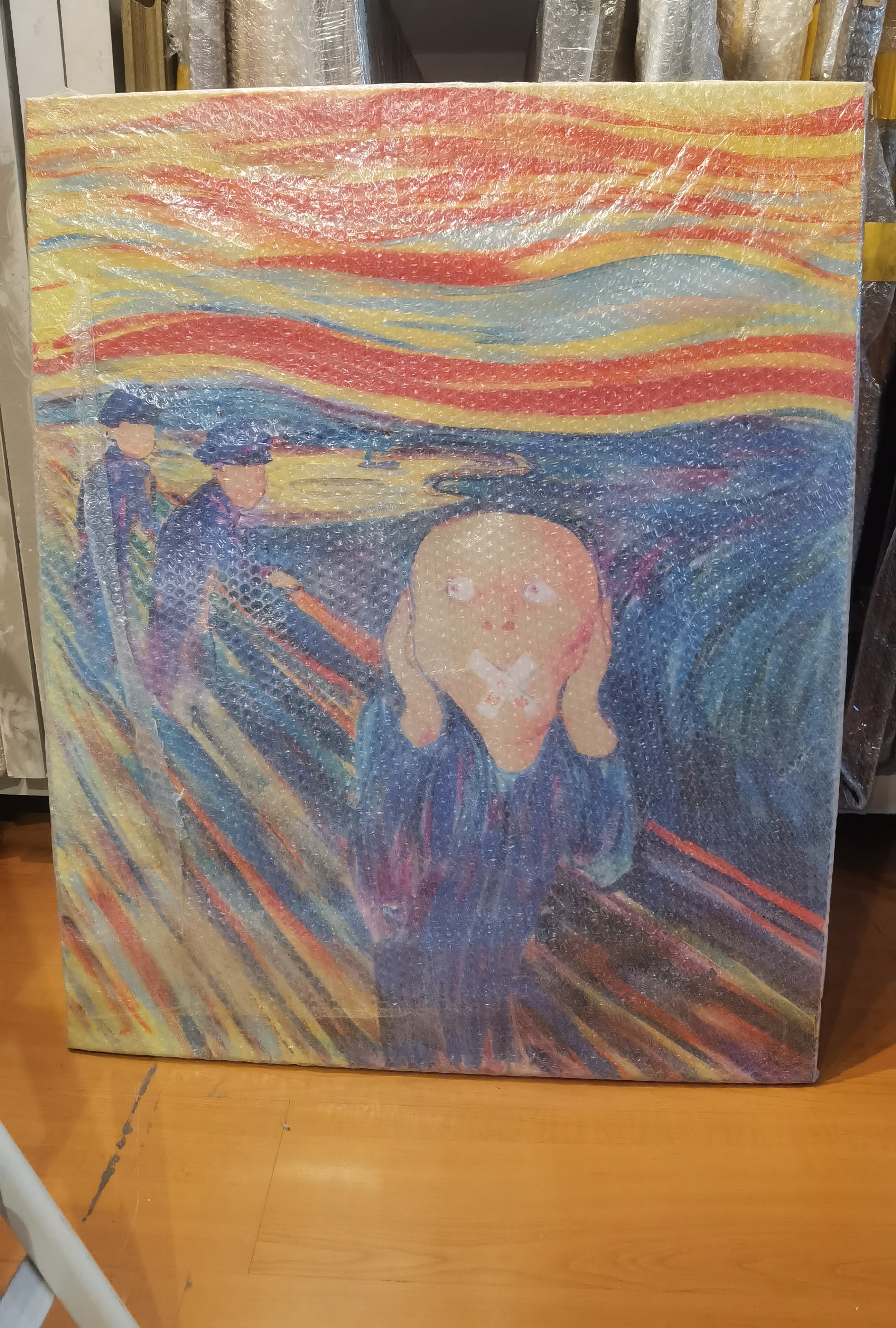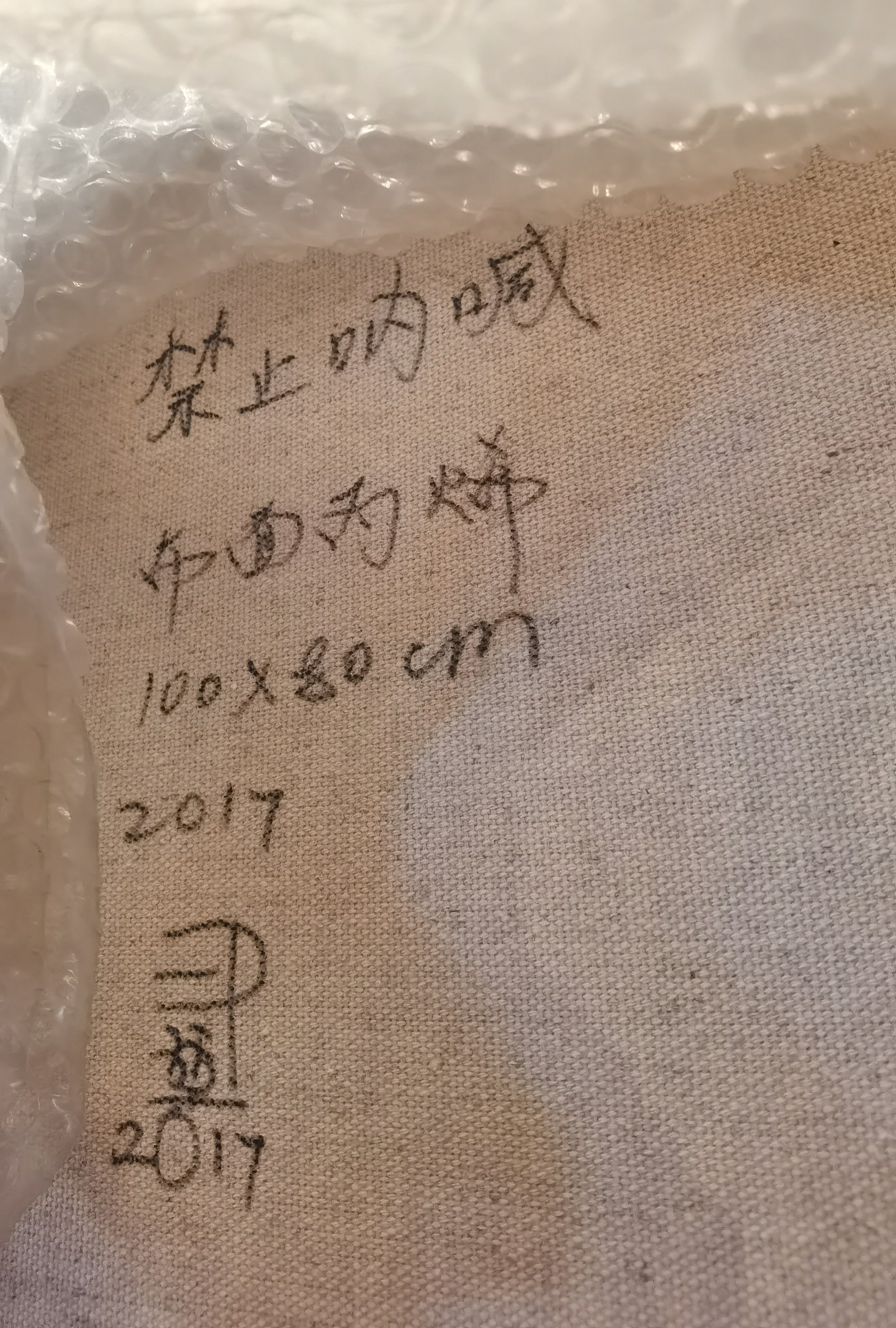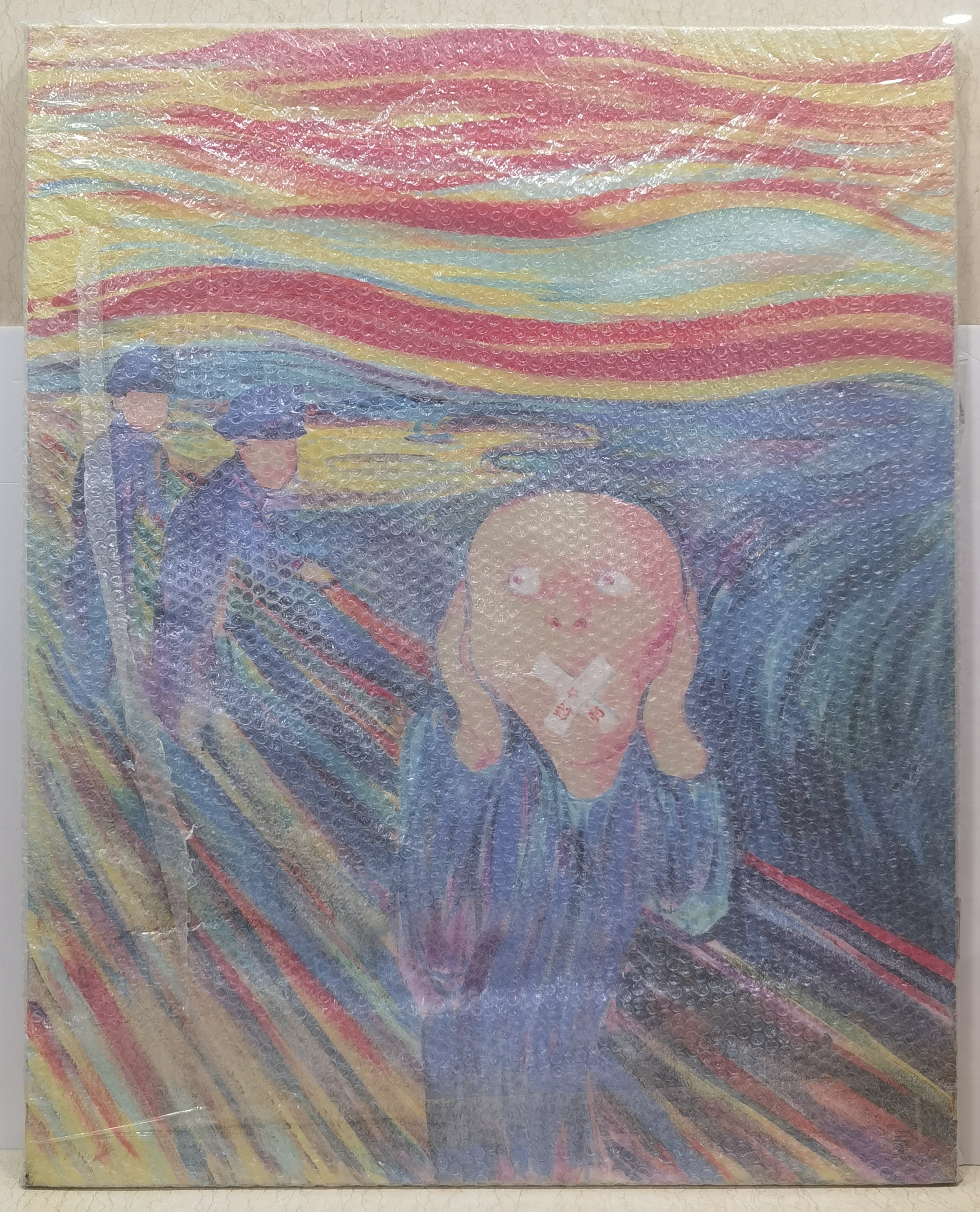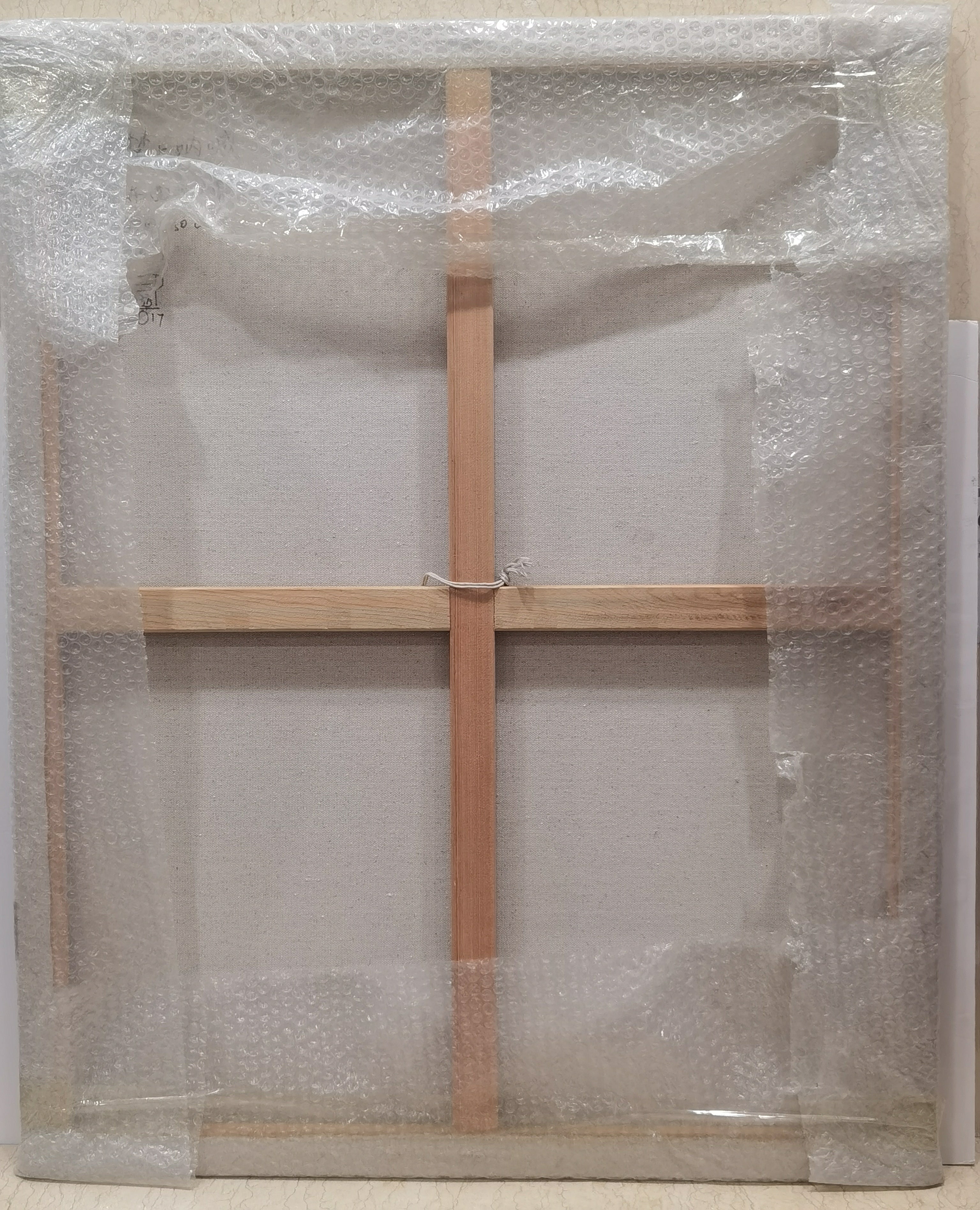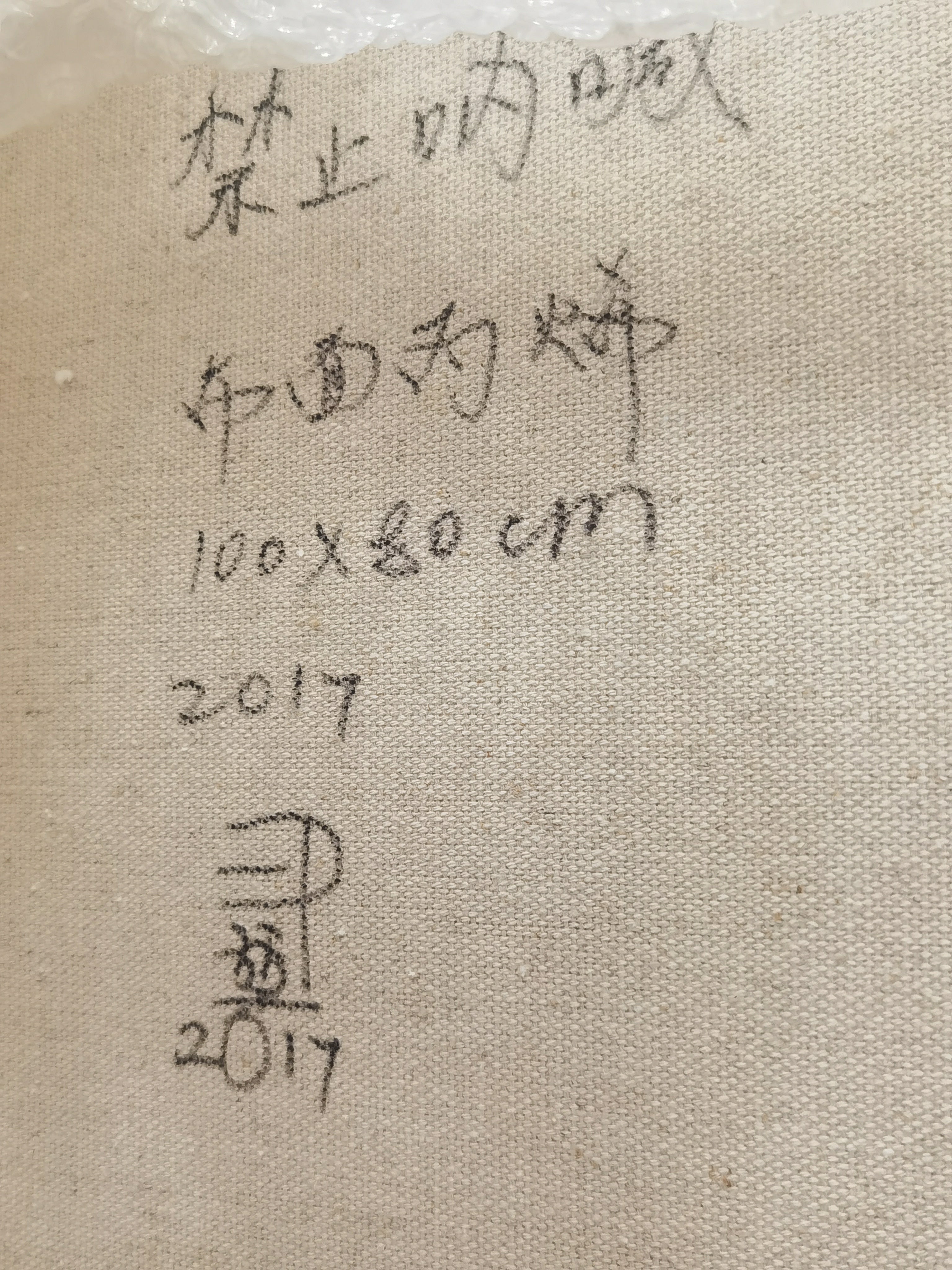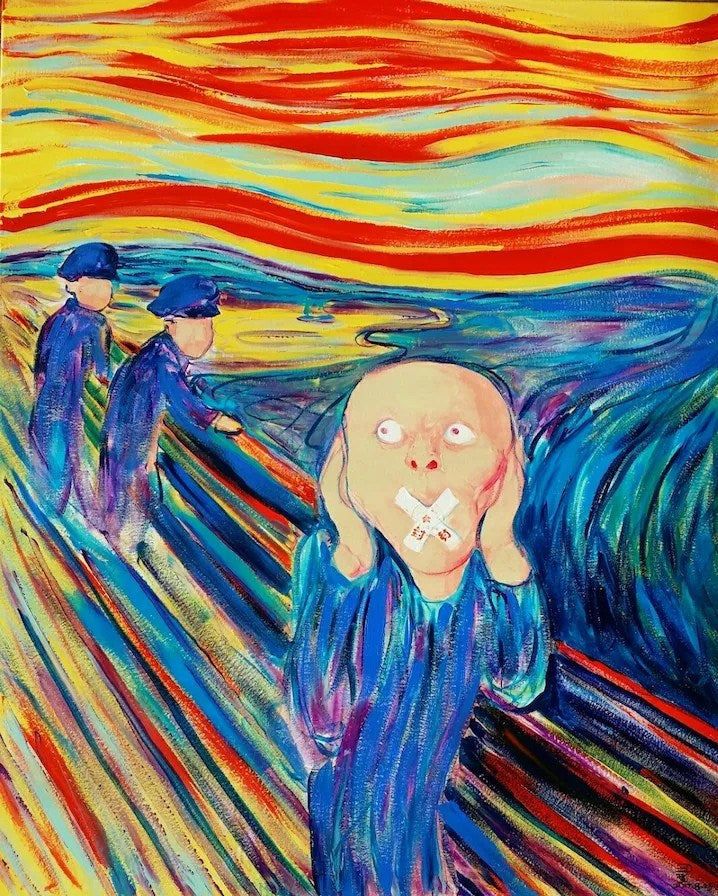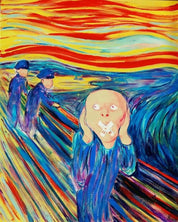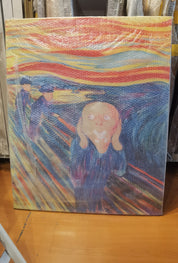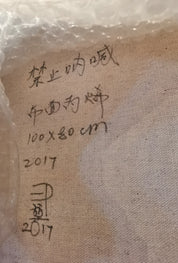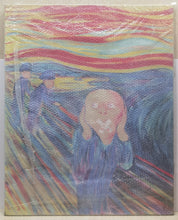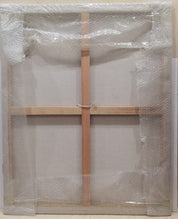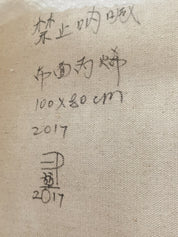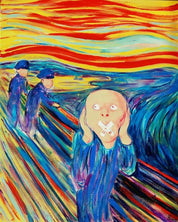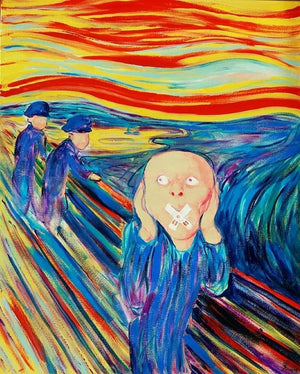Stop Shouting
Yun Kun
Artwork Details
Artwork Description
Title: Stop Shouting
Artist: Yun Kun
Date: 2017
Medium: Oil on canvas
Dimensions: 39.4 x 31.5 in (100 x 80 cm)
Artwork Identification
Stop Shouting by Yun Kun is a visually arresting reinterpretation of Edvard Munch’s iconic The Scream, transformed into a contemporary political commentary. This version replaces the anguished figure’s open mouth with taped lips bearing Chinese characters (meaning "shut up" or "keep quiet"), suggesting enforced silence. The two uniformed figures in the background further imply a theme of control or surveillance.
Artistic Style and Influences
Yun Kun is known for his expressive, bold, and politically charged work. In this piece, he maintains Munch’s characteristic undulating lines and emotional intensity but recontextualizes them with vibrant, almost psychedelic colors and satirical distortion. The exaggerated expression, the addition of censors’ tape, and the presence of authoritative figures reflect a potent critique of censorship and freedom of speech.
Historical Context
Created in 2017, this work reflects a broader discourse around freedom of expression, surveillance, and state control—especially in societies facing political or ideological suppression. Yun Kun uses the instantly recognizable pose of The Scream to explore the consequences of voicelessness in the modern world, making a global symbol resonate with new urgency and specificity.
Provenance
Provenance documentation can be provided upon contact.
Condition and Conservation
The painting is in very good condition. The canvas is stable, and the paint surface is clean and vibrant with no visible signs of deterioration.
Artistic Significance
Stop Shouting is a powerful fusion of homage and protest. By visually quoting Munch while inserting urgent commentary, Yun Kun bridges art history with contemporary sociopolitical issues. His deliberate use of humor and stark symbolism creates an immediate emotional and intellectual impact. The painting stands as a compelling example of how modern Chinese artists engage with universal themes—such as identity, authority, and resistance—through inventive reinterpretation and cultural introspection.

